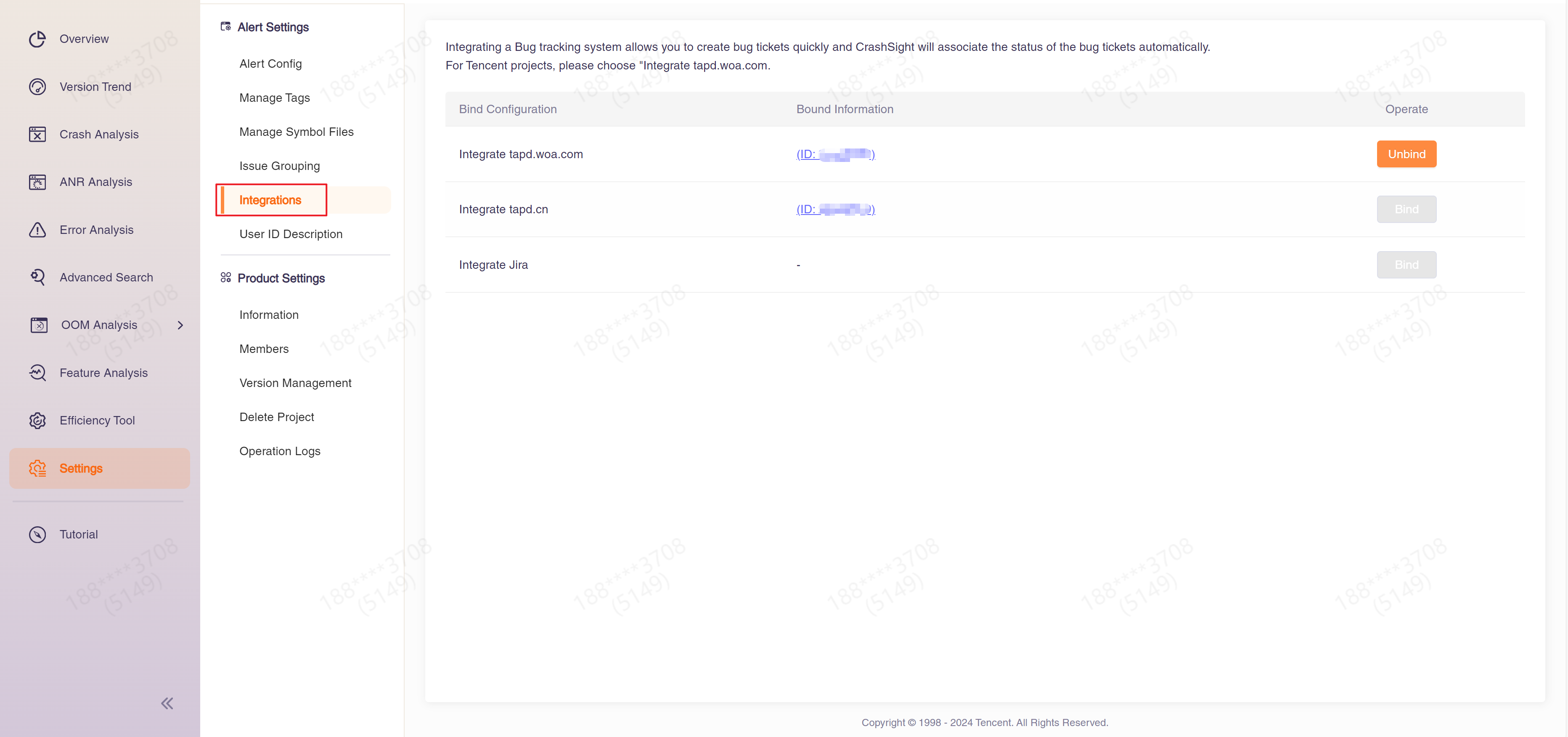Configuration
In "Configuration", you can manage the configuration related to issue handling of this project, including Alarm Config, Manage Tags, Manage Symbol Files, Issue Grouping, Integrations.
1 Alarm Config
Alert rules can be configured here. You can configure alarm triggering conditions and notification methods as needed. You can configure up to 20 different alert rules for a project.
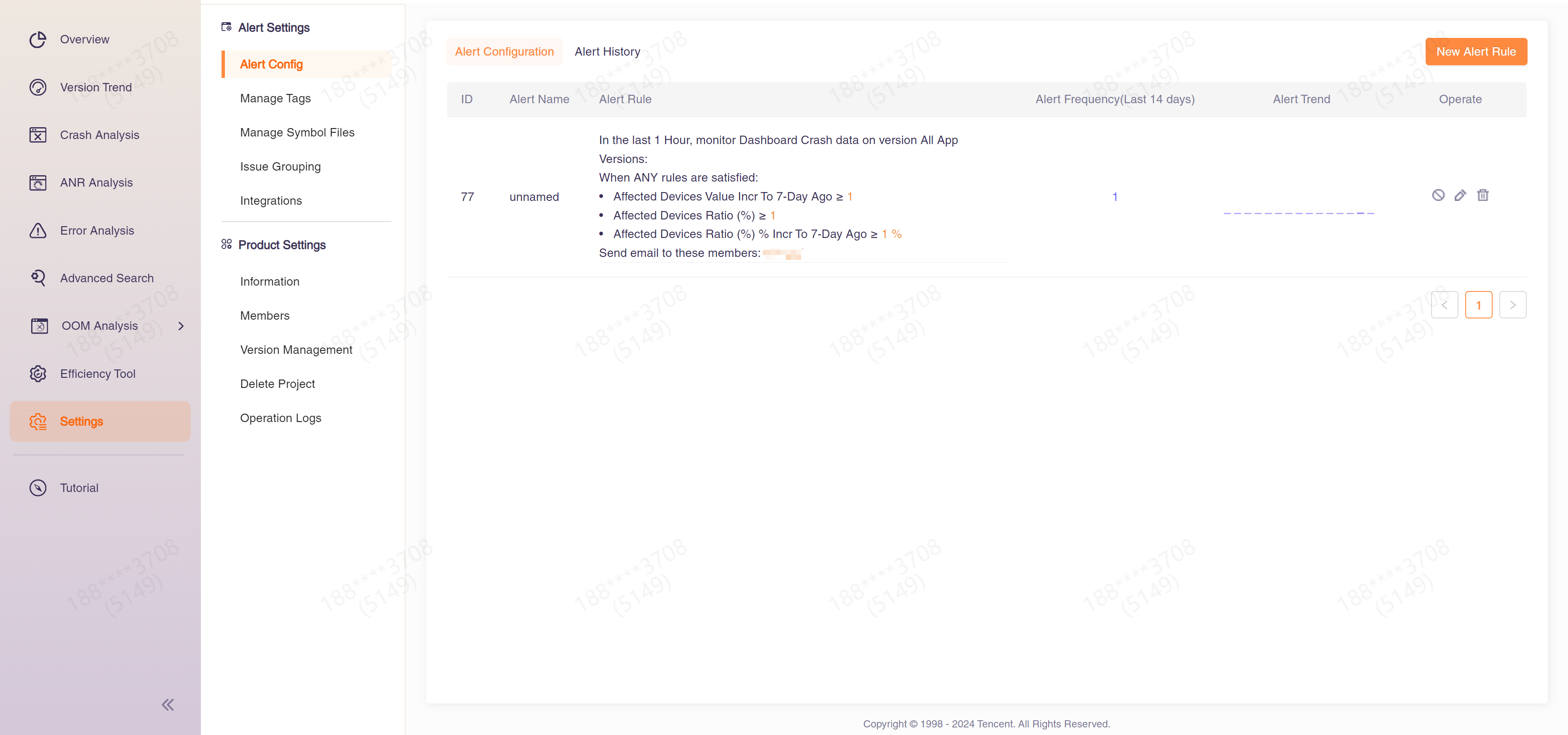
The configuration panel for adding alarm rules is as follows. You only need to fill in the prompts to complete the addition of alarm rules. What needs to be noted is the "Time Interval" column, which has two effects: (1) The trigger frequency of monitoring calculations, for example, 1 hour means that it will only calculate whether the alarm conditions are met every hour, instead of alarming as soon as the conditions are met. (2) Monitoring window size. For example, if it is configured for 1 hour, then the subsequent alarm condition will be how many times it is reached in 1 hour. If it is configured for 5 minutes, it will be how many times it is reached in 5 minutes.
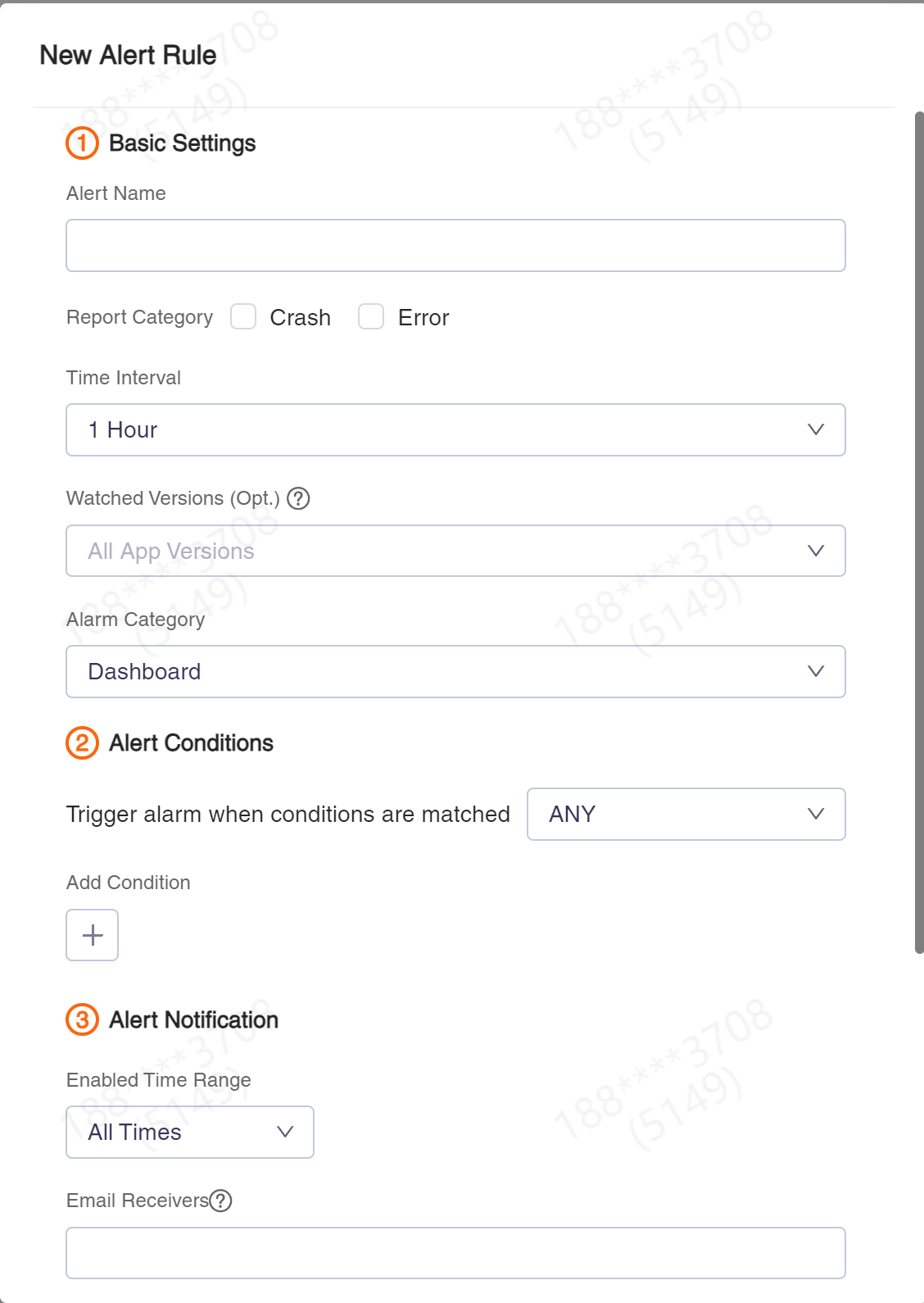
2 Manage Tags
Here you can view the tags you have added to the issues and rename or delete them. Tags are often used to mark certain characteristics of an issue, such as the known cause ("FD overflow"), the scope of the issue ("Test Server", "Huawei Exclusive Crash"), the module in which the issue occurred ("libc", "Update module") or just a prompt ("Urgent!"). For details on how to set tags, see Issue List.
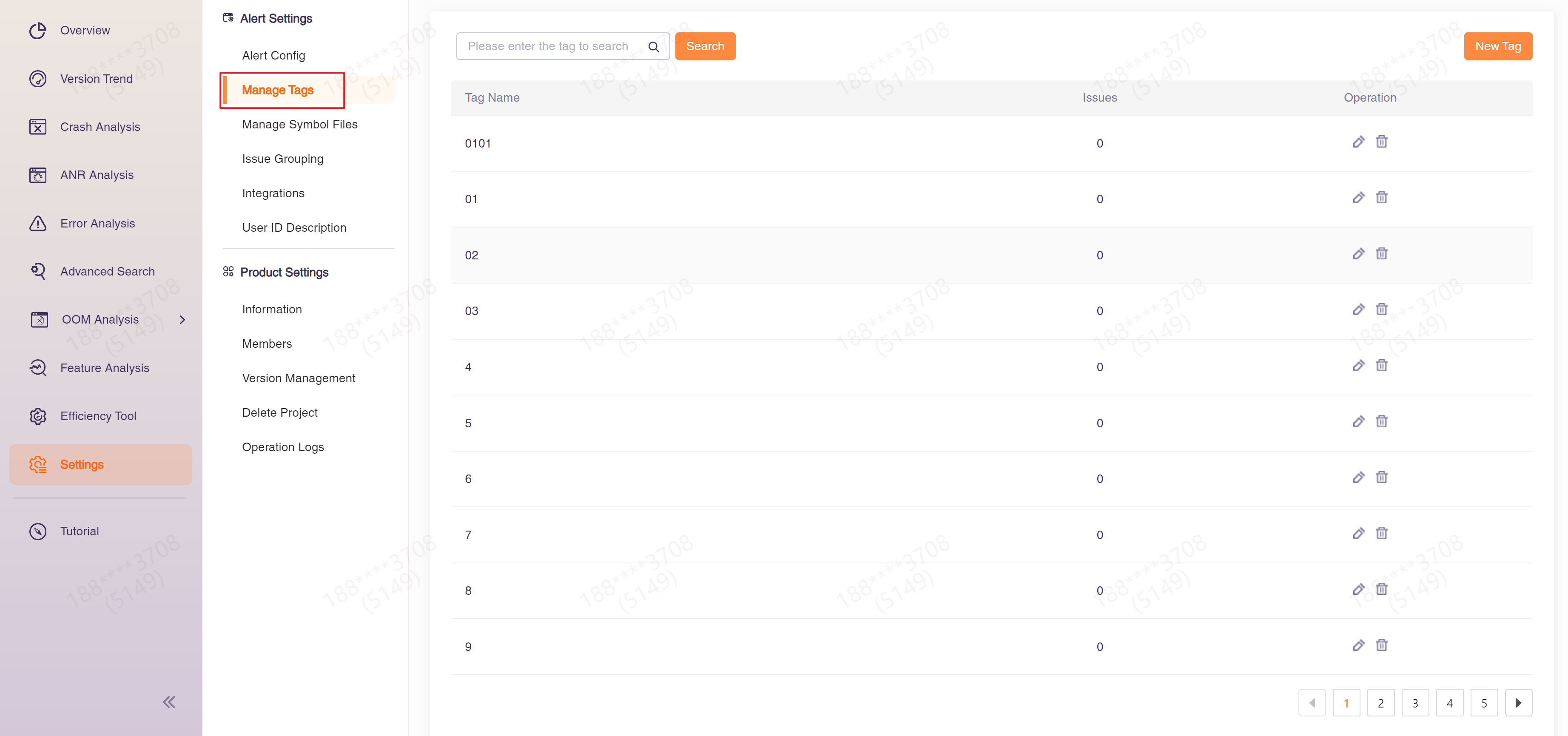
3 Manage Symbol Files
The symbol table for this project can be found here. To upload a symbol table, please refer to Symbol Table Tool Usage Introduction.
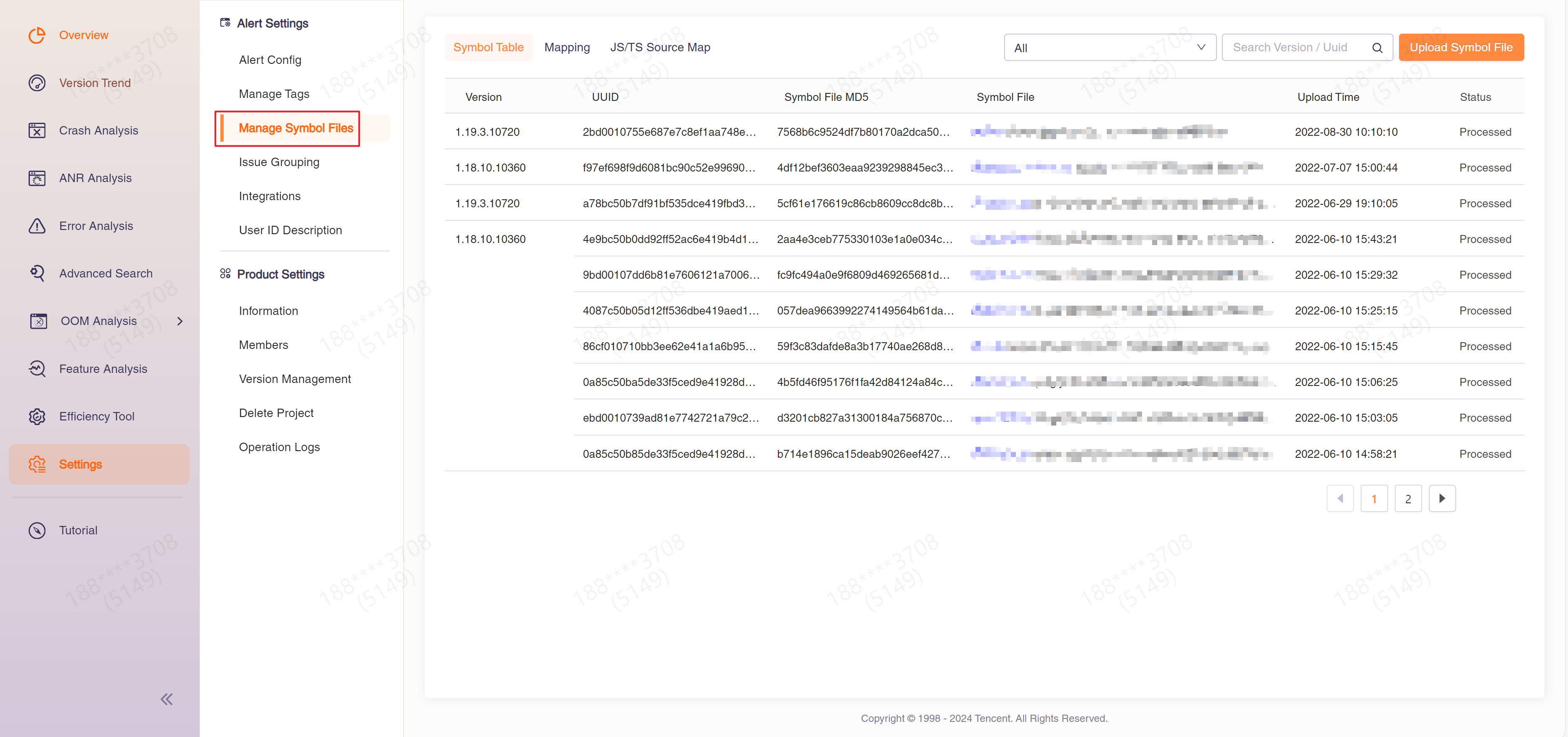
4 Issue Grouping
Here you can change the grouping rules of issues. For the introduction of issue grouping rules and the default rules, please refer to Issue Grouping
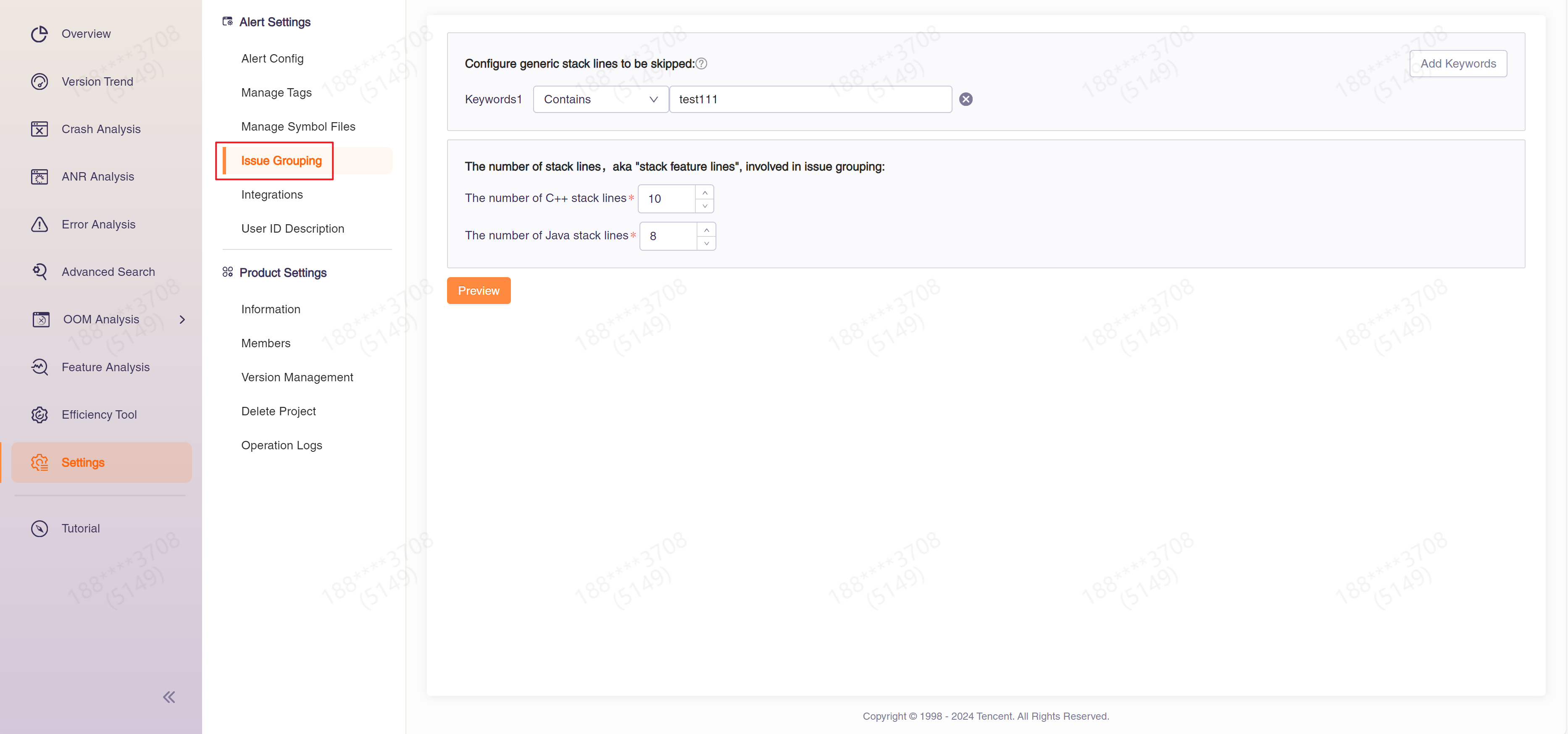
5 Integrations
Here you can bind the project to the intranet version of TAPD, tapd.cn or Jira, and you need to have administrator permissions on tapd.cn or Jira. To bind to tapd.cn, you need to provide the API Account, API Key, and Workspace ID. To bind to Jira, you need to provide the JiraAccountEmail, JiraApiToken, and BaseUrl.
